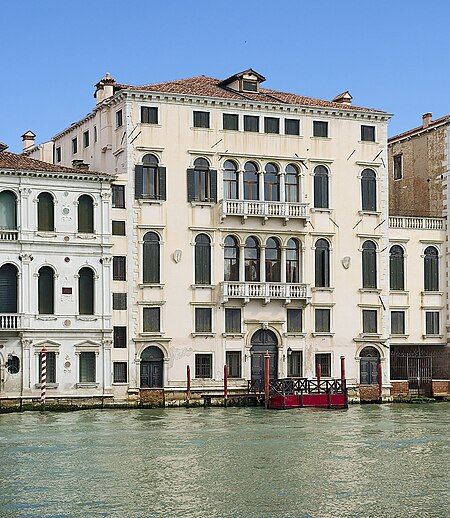Palazzo Querini Dubois
Houses completed in the 16th centuryPalaces in Sestiere San PoloPalaces on the Grand Canal (Venice)Renaissance architecture in Venice

The Palazzo Querini Dubois, also known as Giustinian Querini is a Renaissance-style palace in located on the Grand Canal, between the Palazzo Bernardo a San Polo and the Palazzo Grimani Marcello in the sestiere of San Polo of Venice, Italy. It stands across the canal from the Palazzo Corner Spinelli. A second façade faces the rio delle Erbe. Opposite is Palazzo Querini Benzon.
Excerpt from the Wikipedia article Palazzo Querini Dubois (License: CC BY-SA 3.0, Authors, Images).Palazzo Querini Dubois
Calle de la Madona, Mestre Venezia-Murano-Burano
Geographical coordinates (GPS) Address External links Nearby Places Show on map
Geographical coordinates (GPS)
| Latitude | Longitude |
|---|---|
| N 45.4363 ° | E 12.3306 ° |
Address
Palazzo Querini Dubois (Palazzo Giustinian Querini)
Calle de la Madona
30170 Mestre, Venezia-Murano-Burano
Veneto, Italy
Open on Google Maps










